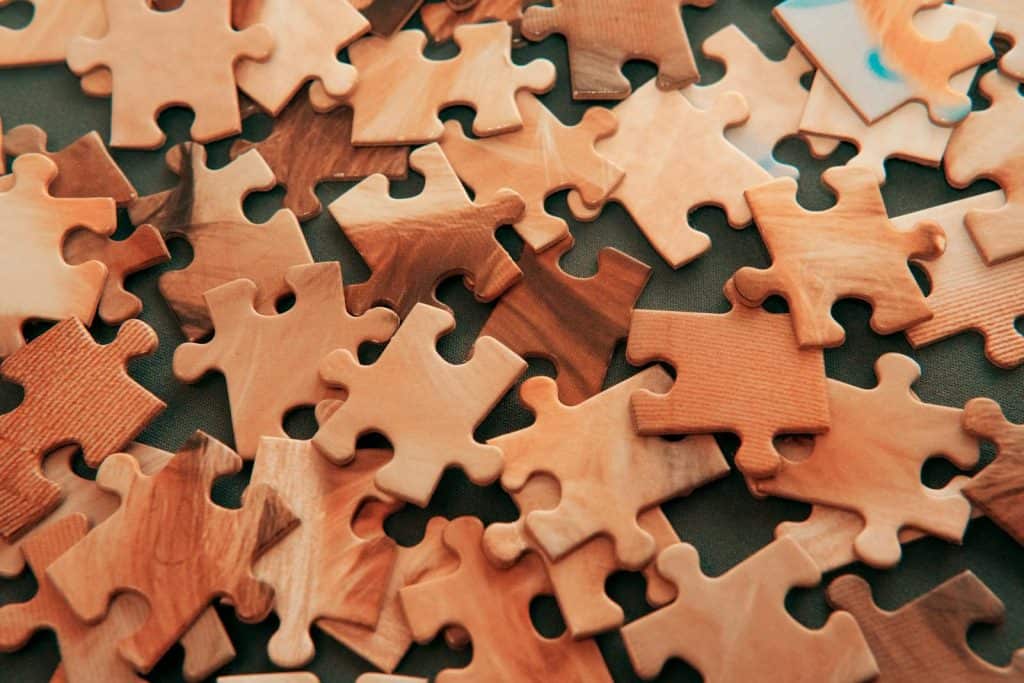Jigsaw puzzles have been a beloved pastime for generations, captivating people of all ages with their ability to challenge, entertain, and provide a sense of accomplishment upon completion. One common question that often arises is, “What is the average size of a jigsaw puzzle?” In this exploration, we delve into the dimensions, piece counts, and popular sizes that make up the puzzling world.
Puzzle Pieces: The Building Blocks of the Game
Jigsaw puzzles consist of numerous pieces that, when assembled, create a unified image. These pieces vary widely in size and shape, contributing to the overall challenge and appeal of the puzzle. Puzzle sizes, measured in dimensions, and the number of pieces play crucial roles in determining the difficulty level and the time it takes to solve the puzzle.

Puzzle Sizes: From Small to Large
Puzzle sizes can range from compact children’s puzzles with just a handful of pieces to intricate thousand-piece puzzles that provide a more significant challenge. The physical size of a puzzle is often linked to its piece count, with larger puzzles featuring more pieces. Wooden puzzles, known for their durability and timeless appeal, also come in various sizes, catering to different skill levels and age groups.
Popular Puzzle Sizes and Piece Counts
One of the most popular puzzle sizes is the standard 1,000-piece puzzle, often considered a benchmark for avid puzzlers. This size strikes a balance, offering a challenge without becoming overly daunting. However, jigsaw puzzles come in a wide array of piece counts, ranging from a few dozen to several thousand pieces.
The Challenge of a Thousand-Piece Puzzle
Thousand-piece puzzles, in particular, are a favorite among enthusiasts seeking a more prolonged and immersive puzzling experience. These puzzles, often boasting intricate patterns and images, demand patience, attention to detail, and a strategic approach to solving. The satisfaction of completing a thousand-piece puzzle is unparalleled, making it a noteworthy example of the diverse puzzle sizes available.
Corner Pieces and the Puzzle Piece Count
Every puzzler understands the significance of corner pieces, the starting point for assembling the puzzle. The piece count, referring to the total number of pieces in a puzzle, determines the complexity and time commitment required for completion. Puzzle piece count can range from just a few pieces in children’s puzzles to several thousand pieces in more advanced and larger puzzles.
Same Shape, Different Challenge
Each puzzle piece has a unique shape, and the challenge lies in finding the right connection. Some puzzles feature pieces that share the same shape, adding an extra layer of difficulty. The ability to discern subtle patterns and slight variations becomes crucial in solving puzzles with same-shaped pieces.

Puzzle Dimensions: Varying Physical Sizes
The physical size of a puzzle refers to its dimensions, and this can vary widely. The most popular size for jigsaw puzzles is often around 24 by 30 inches, providing a comfortable surface for assembly while accommodating the standard 1,000-piece count. However, puzzle dimensions can vary significantly based on the number of pieces and the complexity of the image.
Catering to All Ages and Skill Levels
Puzzle manufacturers understand the diverse preferences and skill levels of their audience. As a result, they create puzzles of different sizes, piece counts, and difficulty levels to cater to a broad spectrum of puzzlers. From children’s puzzles with large pieces to intricate adult puzzles with smaller, more challenging pieces, there is a puzzle suitable for every age and skill level.
The Pleasure of Smaller Puzzles
While larger puzzles with higher piece counts offer a more extended and challenging experience, smaller puzzles have their own appeal. These puzzles, often featuring simpler images and fewer pieces, are perfect for quick puzzling sessions and are well-suited for beginners or those seeking a more relaxed experience.
The Allure of Jigsaw Puzzle Shapes
The shapes of puzzle pieces contribute significantly to the overall experience. Some puzzles feature pieces with standard interlocking shapes, while others introduce unique shapes, adding an extra layer of complexity. The variety in shapes enhances the overall enjoyment of the puzzling process.
Patterns and Images: Adding Fun to Puzzling
The images depicted on jigsaw puzzles vary widely, from landscapes and works of art to scenes from everyday life. The diversity in images adds an element of fun to the puzzling experience, making each puzzle a unique and enjoyable challenge.
Adapting to Different Skill Levels
The beauty of jigsaw puzzles lies in their adaptability to different skill levels. Manufacturers create puzzles with varying difficulty levels, allowing beginners to start with simpler puzzles and gradually progress to more challenging ones as their skills develop. The evolving nature of puzzling keeps it engaging for enthusiasts of all ages.
Search for the Right Size and Difficulty
Choosing the right puzzle involves considering both size and difficulty. Puzzle enthusiasts often find joy in the search for the perfect puzzle that aligns with their preferences and skill level. Whether it’s a large, challenging puzzle or a smaller, more accessible one, the variety in the puzzling world ensures there’s a perfect fit for everyone.
Final Thoughts: What is the Average Size of a Jigsaw Puzzle?
The average size of a jigsaw puzzle encompasses a wide range of dimensions, piece counts, and difficulty levels. From children’s puzzles with large, easy-to-handle pieces to complex thousand-piece puzzles that test the skills of seasoned puzzlers, the world of jigsaw puzzles offers a diverse and fulfilling experience. The joy of solving puzzles, with their varying shapes, sizes, and images, adds a unique dimension to everyday life, providing entertainment, mental stimulation, and a sense of accomplishment with every piece connected. So, the next time you ask, “What is the average size of a jigsaw puzzle?” remember that the answer is as varied and dynamic as the world of puzzles itself.

